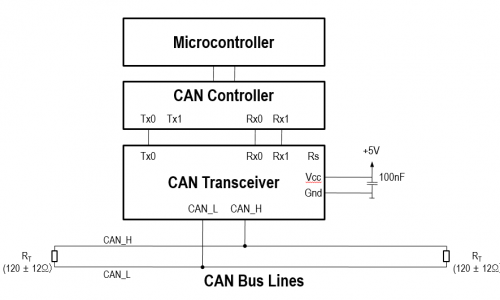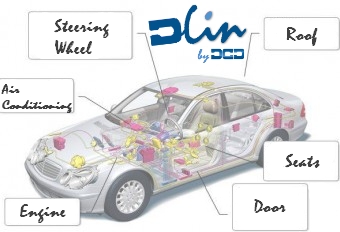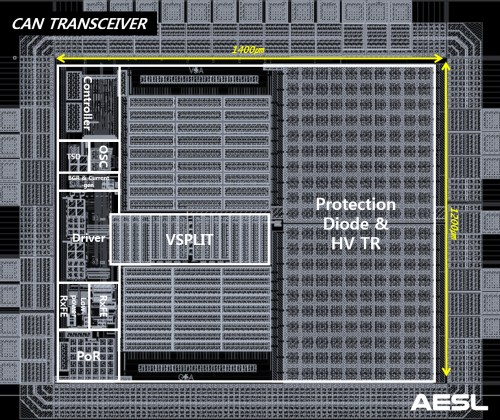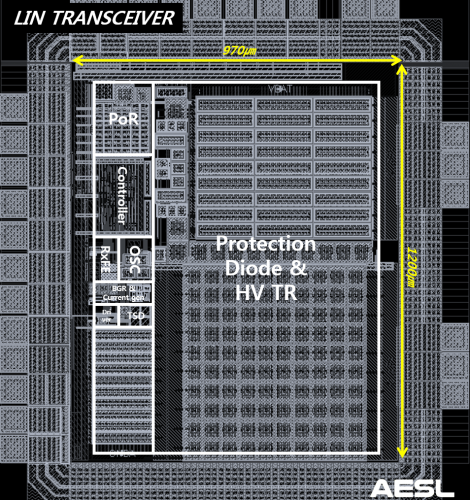CAN/LIN
Control Area Network (CAN)
Concept

A control area network (CAN bus) is a vehicle bus standard designed to allow microcontrollers and devices to communicate with each other in applications without a host computer. It is a message-based protocol, designed originally for automotive applications, but is also used in many other contexts.
The modern automobile may have as many as 70 electronic control units (ECU) for various subsystems. Typically the biggest processor is the engine control unit. Others are used for transmission, airbags, antilock braking/ABS, cruise control, electric power steering, audio systems, power windows, doors, mirror adjustment, battery and recharging systems for hybrid/electric cars, etc. Some of these form independent subsystems, but communications among others are essential. A subsystem may need to control actuators or receive feedback from sensors. The CAN standard was devised to fill this need.

CAN is a multi-master serial bus standard for connecting Electronic Control Units [ECUs] also known as nodes. Two or more nodes are required on the CAN network to communicate. The complexity of the node can range from a simple I/O device up to an embedded computer with a CAN interface and sophisticated software.
All nodes are connected to each other through a two wire bus. The wires are 120 Ω nominal twisted pair.
High speed CAN is usually used in automotive and industrial applications where the bus runs from one end of the environment to the other.
Local Interconnect Network (LIN)
Concept

LIN (Local Interconnect Network) is a serial network protocol used for communication between components in vehicles. The need for a cheap serial network arose as the technologies and the facilities implemented in the car grew, while the CAN bus was too expensive to implement for every component in the car. LIN may be used also over the vehicle's battery power-line with a special DC-LIN transceiver.

LIN is a broadcast serial network comprising one master and typically up to 16 slaves. All messages are initiated by the master with at most one slave replying to a given message identifier. The master node can also act as a slave by replying to its own messages. Because all communications are initiated by the master it is not necessary to implement a collision detection.
Results

Control Area Network (CAN) Transceiver
- Taped-out in Oct. 2015
- SK Hynix 60V Automotive 0.13㎛ BCDMOS process
- Controller, BGR, OSC, PoR, TSD, etc.
- Size: 1400 x 1200 (um²) (except I/O pads)
- Operating frequency: 4MHz
- Data rate : 1Mbps

Local Interconnet Network (LIN) Transceiver
- Taped-out in Oct. 2015
- SK Hynix 60V Automotive 0.13㎛ BCDMOS process
- Controller, BGR, OSC, PoR, TSD, etc.
- Size: 970 x 1200 (um²) (except I/O pads)
- Operating frequency: 250kHz
- Data rate : 20kbps
